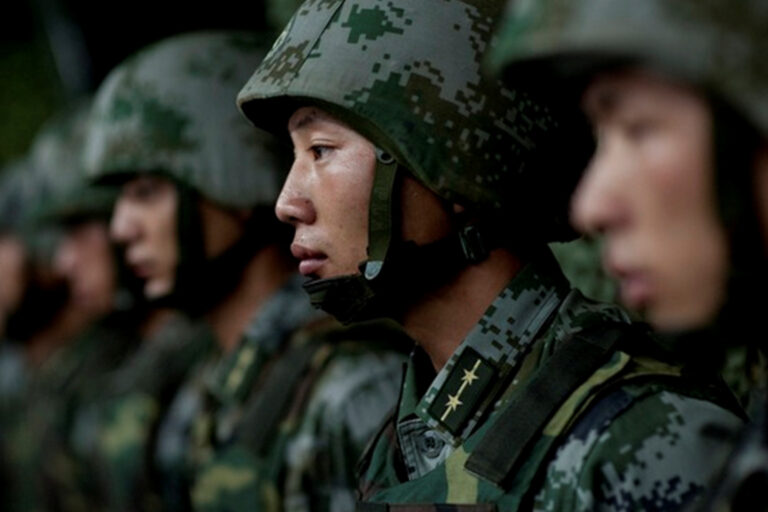The Arab Spring that began in December 2010 highlighted a particular type of contentious politics—the intifada, or uprising—that has yet to be holistically analyzed outside of short-term political consequences. To approach a complete understanding of this form of contentious politics, the intifada must first be understood from a theoretical perspective. Then it is possible to analyze the intifada’s repercussions and possibilities for Egypt, whose government is still incredibly dynamic in its inchoate democratic form. By using Egypt as a case study, conclusions can be drawn about how intifadat occur and the limitations of creating social change through intifadat. This article will illustrate three points: first, why the events in Egypt can be characterized as an intifada; second, why the intifada happened when it did; and finally, why the intifada—as a form of twenty-first century contentious politics—has limited transformative potential.
Defining Intifadat and Why Now?
There are several factors that identify an intifada. First, intifadat have ill-defined structural and procedural goals that are not fully revolutionary. Intifadat occur in populations with a youth demographic bulge, and in regions with economic conditions that exacerbate the j-curve effect; that is, a heightened disparity between expectations and reality.[i] In Egypt, more than one-third of the population of more than 83 million is between 15 and 29 years old.[ii] This group has a 25 percent unemployment rate, compared to the global average of 14.4 percent, and 95 percent of unemployed young people have a secondary education or more.[iii]
Additionally, intifadat occur within regimes that are weakened through processes that delegitimize the social contract. For example, Egypt’s authoritarian president, Hosni Mubarak, attempted to portray Egypt as a legitimate democracy, despite his repressive policies. Furthermore, increased communication as a result of the Internet, cell phones, and social media accelerate the ability of intifadat to mobilize.[iv] While these technologies facilitate large-scale organization, they do not provide for clear leadership. Finally, while there may be one or many organizations shepherding a given intifada, there is no significant organizational structure and hierarchy within an intifada. Egypt fit each of these elements, and was thus exceptionally prone to an intifada.
While these characteristics can explain why a country might be prone to an intifada, they cannot explain why the intifada in Egypt happened when it did. There must be a trigger for an intifada—something that sparks a pre-existing powder keg. However, it is challenging to predict which events will trigger an intifada because similar events, such as policy brutality, may have occurred in the past without sparking a movement. Triggers within intifadat tend to have snowballing effects as the original incident becomes viral.[v] In Egypt, multiple triggers coalesced until citizens were inspired to stand up suddenly to the regime.
The 2011 murder of twenty-eight year-old Alexandria resident Khaled Said by police, which incited the “We Are All Khaled Said” Facebook movement, was the first trigger of the uprising. The April 6 labor movement also mobilized on Facebook to seek justice for workers.[vi][vii] These movements represented new approaches for voicing opposition to the regime, facilitated by the rise of social media.[viii] Additionally, the close timeframe of the Tunisian intifada, Police Day in Egypt, and the 2010 Egyptian elections provided a stark contrast between the Tunisian intifada and the state-endorsed abuse of Egyptian citizens, making the repressive conditions in Egypt less tenable.[ix] President Mubarak’s faux-concessions throughout the uprising, and the thugs Mubarak hired to intimidate protestors, galvanized the protesters. The Egyptian military’s decision not to use violence against the population created a decreased sense of danger, as well. The proclamations of key opposition leaders during the intifada also weakened the regime’s credibility. Finally, a worker’s strike created the perception that the Mubarak regime no longer retained control of mainstream groups.
These triggers were mutually reinforcing and lowered the cost of participation for new activists, creating sustained and far-reaching mobilization.[x] Yet the participants of the uprising were not a group united by hardened stances and shared goals; rather, their mobilization was the result of ongoing reactions to trigger events and the actions of the regime.[xi] [xii] [xiii] This process is typical of intifadat and explains why they will have limited success in transforming societies, due to their reactionary nature and lack of clear objectives.
The Transformational Limitations of Intifadat
To understand the limitations and opportunities of an intifada, and the potential for lasting democracy in Egypt, it is best to first establish how intifadat differ from riots and revolutions. Riots are urban, spontaneous, and issue-based. They begin when citizens make a tangible request from their government, rather than demanding a change of government.[xiv][xv][xvi] The state reacts in accordance with the social contract.[xvii] In contrast, a revolution entails an upending of the socio-political pyramid, rapid change, and violence, according to Theda Skocpol.[xviii] For Skocpol, revolution is a product of the rise of capitalism and a transformation of societies in response.[xix]
According to Samuel Huntington, revolution is “a rapid, fundamental, and violent domestic change in the dominant values and myths of a society, its political institutions, social structure, leadership and government activity and policies.”[xx] From this perspective, revolution is a characteristic of modernization—it will not occur in highly traditional societies with low levels of social and economic complexity, nor will it occur in highly modern societies.[xxi] A revolution concludes with the creation and institutionalization of a new political order.[xxii][xxiii]
Given this understanding of both riots and revolutions, it is clear that neither a riot nor a revolution occurred in Egypt, but rather, a hybrid. The Egyptian uprising was less spontaneous than a riot, it was more organized, and there was not a substantive demand to which the regime could respond. The Egyptian uprising cannot be defined as a revolution because its aims, goals, and organization were not in the pursuit of upending the socio-political structure of Egypt. While many protestors expressed a desire for liberty, freedom, and an end to corruption, the movement did not clearly articulate objectives or organize around tangible goals that would bring about a new system. For a revolution to occur in Egypt, it would have been necessary for protestors to seize power from the military and to establish a new socio-political order, with redistribution of power and new political institutions.[xxiv]
Within the context of intifadat as a twenty-first century middle ground between riots and revolutions, it appears that intifadat are a product of countries that have experienced a modernization program and a form of soft-dictatorship; that is, illiberal, authoritarian systems that have a semblance of “democracy.” These forms of government have some degree of freedom, as well as elections and constitutions, yet in reality, the rule of law and the legitimacy of elections are limited and a dictator or strongman rules. This particular mix demonstrates the illegitimacy of the regime to the populace.
While norms and values differ by country and region, the world seems to have reached a tipping point where most citizens aspire to democratic forms of government. According to Stephen Grand, “Democracy has acquired the status of a near-universal norm. In public opinion surveys, the majority of citizens in most countries around the world express a preference for democracy over other forms of government.”[xxv] Democracy allows for integration into the world capitalist economy, and appears to be the best model for the extension of civil liberties and economic opportunity.
Yet the success of an intifadat, and its calls for the creation of some form of democracy, is difficult to measure. In response to world norms of democracy, the regimes in intifada-prone countries generally attempt to appear like liberal democracies. Given this context, it is not necessary to stage a revolution, but instead to establish institutions that provide the freedoms and opportunities expected in a democracy. However, it is difficult to measure the success of these new institutions, compared to the clear outcomes of a revolution.
Intifadat are limited by the electronic nature of their mobilization, as well. While mobilization may surge at the intifada’s crescendo (an estimated six million Egyptians protested at some point during the uprising, according to the Abu Dhabi Gallup Center), participants are not unified by a single organization or hierarchy.[xxvi] Online dialogues are limited in scope, and the interpersonal connections between participants are constrained by virtue of the interface. Therefore, electronic mobilization prevents the formation of a coherent, unified message, or a single leader representing the movement. Additionally, the movement is also constrained in its ability to transform the uprising into a permanent force that can continuously negotiate and assess the progress of the intifada. Consequently, the Egyptian intifada succeeded only in authoritarian liberalization–the liberalization of the existing Egyptian regime–rather than permanent change.
The intifada in Egypt was also structurally limited by the country’s strong military, both as a force and as a social institution. The key variable in a successful revolution is the disestablishment of the regime’s military, or at least the handover of control to the protestors, neither of which occurred in Egypt. Instead, what occurred was a military-led transition by the Supreme Council of the Armed Forces (SCAF). Given its high organizational capacity, the Muslim Brotherhood was able to create pacts with the military, which created a diverse and largely legitimate alternative to the former regime. However, the new regime certainly did not embrace the full scope of changes articulated by many protestors. The Muslim Brotherhood broke from the liberals and supported the 19 March 2011 constitutional amendments by the SCAF.
In their work Transitions from Authoritarian Rule, Guillermo O’Donnell and Philippe C. Schmitter examine the limitations of military-led democratic transitions, and shed light on the parameters of change that can be expected from intifadat that occur in countries where the military is strong and remains in power. First, the authors assert there must be “a clear distinction between the ‘liberalization’ of an authoritarian regime and full democratization.”[xxvii] Within this volume, Alfred Stepan discusses the possibilities for democratization led by “military-as-government,” or “military-as-institution,” which accurately describes the situation in Egypt. Stepan argues that the military will push for democratization, while maintaining a number of emergency powers, if its interests will be served by the transition. According to Stepan, this push for democratization is likely to occur in response to foreign imposition or opposition-led armed violence, rather than domestic pressures. Therefore, loss of civilian support is not sufficient for the government to fall.[xxviii]
Conclusion
This analysis contradicts several popular assumptions about the Egyptian uprising and the Arab Spring in general. First, the Egyptian “revolution,” as it was characterized by international media, was not a revolution, but rather an intifada or uprising. In comparison to a riot or a revolution, an intifada has limited democratization potential, as a result of its loose organization and lack of clearly defined objectives. Additionally, the military-as-government’s pacts with the Muslim Brotherhood provide conditions for limited liberalization of Egypt’s authoritarian government in Egypt, not democratization.
For those seeking democratization in Egypt, the limitations of intifadat as mechanisms of social change present important lessons. Networks should be formed during the mobilization process so that protestors can maintain continued organization after the initial reactionary uprising. The original organizers of the intifada must create clearly defined, actionable objectives. They should circulate these objectives to the masses throughout the course of the uprising. There must also be a general consensus among protesters that a military takeover is not an acceptable outcome. If the protestors wish to achieve their goal of democratization, then it is necessary to understand this dynamic in order to overcome it.
Written by Jennifer Fishkin
Jennifer Fishkin is a graduate of the SAIS Class of 2012, where she specialized in international economics and conflict management, as well as global theory and history. She has a B.S. from Cornell University in Industrial and Labor Relations with minors in Middle East Studies and International Relations.
[i] Gurr, Ted Robert. Minorities at Risk: A Global View of Ethnopolitical Conflicts. Washington, D.C.: United States Institute of Peace, 1993. Print.
[ii] CIA World Factbook. “Egypt.” CIA. US Government, 16 Apr. 2012. Web. 13 May 2012. https://www.cia.gov/library/publications/the-world-factbook/geos/eg.html
[iii] Foreign Affairs, comp. The New Arab Revolt: What Happened, What It Means, and What Comes next. New York: Council on Foreign Relations, 2011. Print.
[iv] Amer, Pakinam. “Egypt Today: Twitter Nation.” Egypt Today: The Magazine of Egypt. 14 Sept. 2011. Web. 13 May 2012. http://egypttoday.com/news/display/article/artId:316/twitter-nation/secId:3
[v] Zartman, I. William. “Intifadat (Political “Revolution”).” Contentious Politics: Patterns of Protest and Revolt. SAIS, Washington. 16 Feb. 2012. Lecture.
[vi] “Egypt Facebook Statistics.” Socialbakers.com. Web. 13 May 2012. http://www.socialbakers.com/facebook-statistics/egypt
[vii] International Center on Nonviolent Conflict. “Ahmed Salah.” On the Ground Interviews. International Center on Nonviolent Conflict. Web. 13 May 2012. http://www.nonviolent-conflict.org/index.php/learning-and-resources/on-the-ground/1547-ahmed-salah
[viii] “Egypt Passes 100% Mobile Penetration.” Telecompaper. Telecompaper, 1 Feb. 2012. Web. 13 May 2012. http://www.telecompaper.com/news/egypt-passes-100-mobile-penetration
[ix] Cook, Steven A. The Struggle for Egypt: From Nasser to Tahrir Square. New York: Oxford UP, 2012. Print. 281
[x] Tilly, Charles. From Mobilization to Revolution. Reading, MA: Addison-Wesley Pub., 1978. Print.
[xi] Cook, Steven A. The Struggle for Egypt: From Nasser to Tahrir Square. New York: Oxford UP, 2012. Print. 285-287
[xii] Al Jazeera, prod. The Arab Awakening – Tweets from Tahrir. AlJazeera English. 19 Feb. 2012. Youtube. 19 Feb. 2012. Web. 13 May 2012. http://www.youtube.com/watch?feature=player_embedded&v=4yljfoq2qas#!
[xiii] Foreign Affairs, 116
[xiv] Hobsbawm, E. J. Primitive Rebels: Studies in Archaic Forms of Social Movement in the 19th and 20th Centuries. New York: W.W. Norton, 1965. Print. 110
[xv] Zartman, I. William. “Administration and Protest: Riots.” Contentious Politics: Patterns of Protest and Revolt. SAIS, Washington. 9 Feb. 2012. Lecture.
[xvi] Lawrence, Peter R. World Recession and the Food Crisis in Africa. London: Review of African Political Economy, 1986. Print.
[xvii] Rudé, George F. E. The Crowd in History: A Study of Popular Disturbances in France and England, 1730-1848. London: Serif, 2005. Print.
[xviii] Skocpol, Theda. Social Revolutions in the Modern World. Cambridge [England: Cambridge UP, 1994. Print.
[xix] Ibid.
[xx] Huntington, Samuel P. Political Order in Changing Societies. New Haven, CT: Yale UP, 2006. Print. 264
[xxi] Huntington, 265
[xxii] Huntington, 266
[xxiii] Zartman, I. William. “Organization: State and Social Revolution.” Contentious Politics: Patterns of Protest and Revolt. SAIS, Washington. 15 Mar. 2012.
[xxiv] Tilly, Charles, and Sidney G. Tarrow. Contentious Politics. Boulder, CO: Paradigm, 2007. Print.
[xxv] Pollack, Kenneth M. The Arab Awakening: America and the Transformation of the Middle East. Washington, DC: Brookings Institution, 2011. Print. 22
[xxvi] Pollack, 103
[xxvii] O’Donnell, Guillermo A., and Philippe C. Schmitter. Transitions from Authoritarian Rule: Tentative Conclusions about Uncertain Democracies. Baltimore: Johns Hopkins UP, 1986. Print. 8-9
[xxviii] O’Donnell, Guillermo A., and Philippe C. Schmitter. Transitions from Authoritarian Rule: Tentative Conclusions about Uncertain Democracies. Baltimore: Johns Hopkins UP, 1986. Print. 76-77



